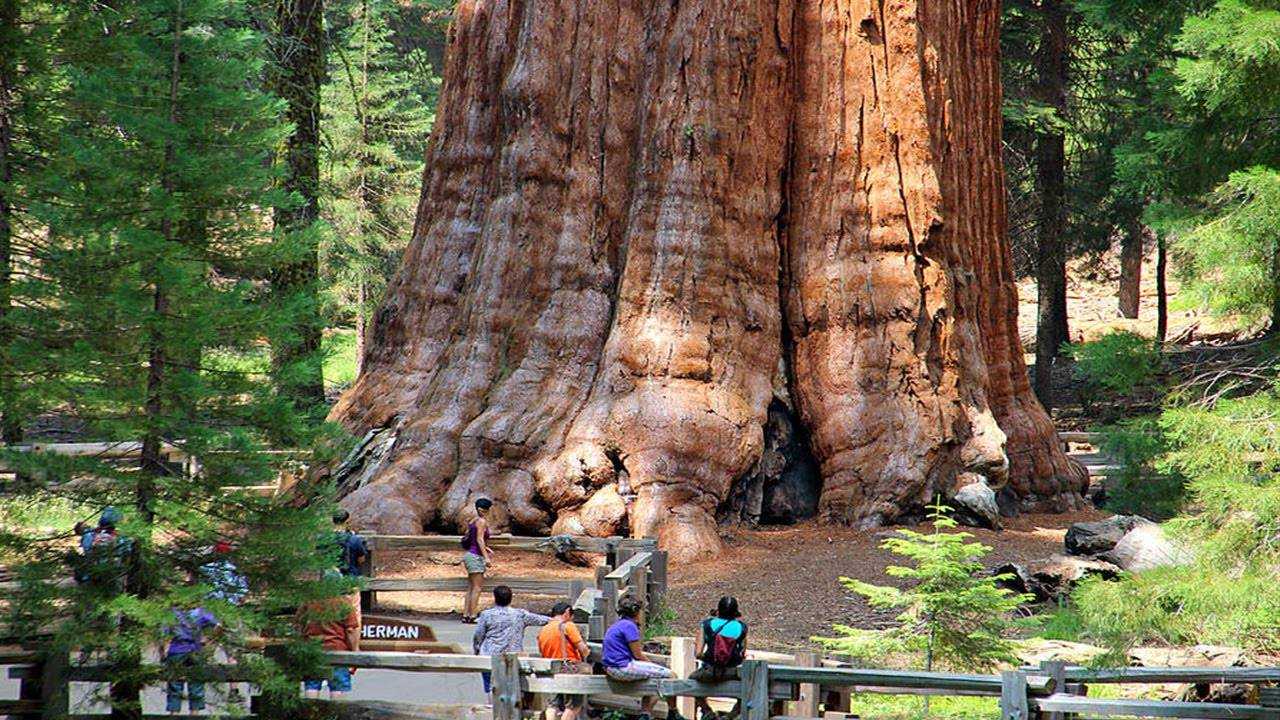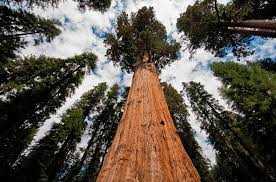Seasons – from Seed to Sequoia
I haven’t seen a giant sequoia tree before so I did a little reading on it and I discovered some amazing facts. First of all, the giant sequoia is the largest single tree in the world and the largest living thing by volume. The oldest known sequoia is 3500 years old. Which means this particular tree existed even before the birth of Jesus Christ. You can get lost in amazement at how huge the Sequoia is and you are right to do so. But how do you even come to terms with the fact that a tree that can grow to be 164-279 ft tall was once a seed? This idea is fully illustrated in Hillsong’s song ‘seasons’.
Hillsong lyrics are always steep in poetic language and that is what I like about their songs. ‘Seasons’ is no different. In the first verse, the songwriter, Benjamin Hasting, introduces us to harsh realities that humans face using the imagery of winter. In the first four lines he says:
Like the frost on a rose
Winter comes for us all
Oh how nature acquaints us
With the nature of patience.
The imagery of frost on a rose sends chills down my spine. The rose represents everything that is lovely and beautiful in nature. Unfortunately, the rose plant finds itself in the winter, snow has fallen and left frost on the rose petals. This is why the writer goes on to say that ‘winter comes for us all’. It means bad seasons come for all of us – even the most adorable and lovely people amongst us. One of the greatest deceptions is to think that you are the only one going through hard times. That thought alone in itself is an additional burden. I am reminded of the comforting words of the Apostle Peter when he said in 1 Peter 5:9 that, ‘…the same kind of suffering is being experienced by your brotherhood throughout the world’. Winter comes for US all indeed. What should be our reaction to the winter seasons of our lives? Well, let’s go back to the first 4 lines of the song and the imagery of the rose in the winter. The songwriter goes on to say that nature acquaints us with the nature of patience. Basically, all he is saying is, a close study of nature teaches us what it means to be patient through harsh seasons. One of such harsh seasons has already been illustrated by the imagery of a probably lone rose plant, standing in the snow and covered by frost.
Fig.1 (A giant sequoia tree)
When the songwriter said ‘like a seed in the snow, I’ve been buried to grow’ we are likely to overlook his choice of words and what they mean in the song. Notice he didn’t say the seed was PLANTED in the snow – which would have made more sense, agriculturally – but he said the seed had been BURIED to grow. First of all, anything that is buried isn’t expected to grow. Secondly, the anticipation of growth is the reason why we don’t describe the act of putting a seed in the soil as burial but as planting. Therefore, we can conclude that in this scenario either the planter had no hope of seeing a tree sprouting out of the ground in due season or the seed thought it was buried to die. As children of God, our planter is God himself and we are the seeds. When God puts you in the soil, it is up to you to see it as the agricultural activity of planting that it is, or you can see it as your burial service. Often we see it as the latter. We get lost in our comfort zone to the extent that when seasons change we think we are doomed forever. Planting shares some similarities with burial. However, trust your planter and believe with all your heart that though it may look like a burial, it is indeed a planting. If you insist that it is a burial, then please agree with the songwriter when he said that you have been buried to grow and not to rot in the soil. Remember Jesus said ‘unless a grain of wheat falls to the earth and dies, it remains alone; but if it dies, it bears much fruit’.
The promises of God are ye and amen. When God speaks, the word doesn’t return to him void, but it accomplishes the purpose for which it was sent. It is as if God sends his word on a mission expecting it to only report back to him when the mission is complete. God’s promise is loyal, from seed to Sequoia, as the songwriter puts it. Through the varying seasons of our lives, God’s word remains the same. Seasons will come and go but God’s word will remain the same. For heaven and earth shall pass away but his word will never pass away. When we come to the full understanding of this, we can boldly declare together with David that ‘thy word o Lord, is settled in heaven’. It is never changing. It is loyal.
The chorus of the song says that:
Though the winter is long, even richer, the harvest for me
Though my waiting prolongs, even greater your promise for me like a seed
I believe that my season will come
By this, we are reminded of the fact that the longer it takes for God’s word to come to pass in our lives the bigger the testimony. The longer it takes for the seed to sprout out the richer the harvest. Ben Hasting, here equates the promises of God to a seed and we know seeds are planted to grow. It is amazing how in the first stanza of the song the songwriter equates the seed to himself (a child of God) when he said ‘I’ve been buried to grow’ but in the chorus, the seed represents the promises of God. It is because as children of God we are a promised generation of people. In these last days, we are the manifestation of many Old Testament prophecies and promises. Being co-heirs with the promised Messiah makes us a promised generation as well. Scripture does not mince words when it says that ‘creation earnestly awaits the manifestation of the sons of God’. Creation is waiting for the manifestation of the children of God. The songwriter informs us that nature acquaints us with the nature of patience and scripture says that creation (nature) awaits (patiently) the manifestation of the children of God. We, as believers, are to learn the nature of patience from creation that is waiting for our manifestation.
The first two lines of the second verse take our eyes off the harsh season and direct it at something that totally contradicts it. It says ‘Lord, I think of your love, like the low winter sun’. The winter sun is a contradicting imagery of the winter season. However, the sun is low. Although it is there, it appears to be present not in its full force. This represents the times when we are sure of God’s existence but we can’t seem to see him at work in all his might in our lives. Looking at the low winter sun will make you crave the sunny days of summer. However, it is a matter of time for seasons to change. In times of trouble, it is best to fix your eyes on the slightest glimmer of hope. If it is a flicker in the bush, look at it. If it is a low winter sun, keep your mind stayed on it. This is why the song goes on to say that “. As I gaze I am blinded, In the light of your brightness”. Light is blinding by nature. God’s light blinds you to the things that should stay out of your sight that you have been focusing on. The love of God should consume our very thoughts and meditations always. The hope it gives us is what we need in the winter seasons of our lives. It sustains us till the promise is fulfilled. Just as manna was a sustenance for the Israelites before they entered the promised land, so is the low winter sun to us during our winter seasons.
The song again goes on to say that “Like a fire to the snow, I’m renewed in your warmth. Melt the ice of this wild soul, till the barren is beautiful”. This is what meditating on God’s love does to your cold, wild soul. There is renewal in the love of God. There is a restoration of beauty in the love of God.
Often I have found that the bridges in Hillsong songs are lyrics I want to continually speak over my life or chant throughout the day. The bridge in this particular song starts with the following lines:
I can see the promise, I can see the future
You are the God seasons and I’m just in the winter
If all I know of harvest is that it’s worth my patience
If you are not done working, God, I’m not done waiting
I am particularly intrigued by the second line that suggests that God is the God of seasons and we are merely trapped in one of them. This literally means our winter seasons are temporal. We serve the God of all seasons who is capable of changing seasons. Therefore, the harvest is worth our patience dear friends. Every farmer will attest to the fact that the joy of harvest is a feeling worth waiting patiently for. Scripture describes Christ as the ‘lamb who was slain from the foundations of the earth’ meaning he was destined to be sacrificed way before the earth was created. This goes to show that God works on the solution before the problem manifests. Therefore by saying if God is not done working, I doubt the writer wants to suggest that God is now working. He is talking from a human point of view. If the harvest isn’t here yet, then it seems God is still working on it or preparing to launch the harvest. Until that happens, I am not done waiting. Until the manifestation of our harvest, we should be bold enough to declare that we are not done waiting. Don’t you run out of patience! God will perfect everything that concerns us.
The bible says that God watches over his word to perform it. Ben Hasting put it in a different way. He said ‘you can see my promise, even in the winter. You are the God of greatness even in the manger’. God can see the promise he made you even in the winter. Although you have either forgotten it or lost sight of it, God is still watching over his word and waiting for the appointed time to fulfill it.
Getting to the end of the song we are reminded of the greatest promise ever made (Jesus Christ) in these lines, ‘If all I know of seasons, is that you take your time. You could have saved us in a second, instead, you sent a child’. God could have sent a 200 ft. sequoia in all of its splendor and majesty, but he sent a seed. Why? Because he is the God of seasons. Why would he be the God of seasons and not trust in seasons? He sent a child knowing that in due time, that child would grow to become a sequoia and bring salvation to the whole world. Like a seed, Jesus was sown, for the sake of us all. Can we ever get to the point where we fully understand the mystery of God himself trapped in the small frame of a baby?
It is sometimes impossible to fathom that an enormous entity was once non-existent or not as big as it is today. It is unbelievable to see who Jesus is right now and imagine that he was once the baby in the manger that the shepherds and wise men worshipped. The songwriter does well to remind us that he is the God of greatness, even in the manger and also that ‘from Bethlehem’s soil, grew Calvary’s Sequoia’. Hallelujah! The seed God planted in Bethlehem grew to become the sequoia at Calvary under which we all gather for shade. In reverse, never forget that the Sequoia at Calvary was once a little seed at Bethlehem. If ever you think your life won’t amount to anything, think about these things I’ve said. That no matter how big and tall the Sequoia is today, it was once a seed.
Bible References
John 12:24
2nd Corinthians 1:20
Isaiah 55:11
Matthew 24:35
Psalm 119:89
Romans 8:19
Revelation 13:8
Jeremiah 1:12




Comments
This explanation just blessed me and made clear what I was thinking when I heard this song. Thanks for the time you spent writing this to help us out,and may God bless you and the Hillsong group too.
This actually blessed me. Thanks a lot